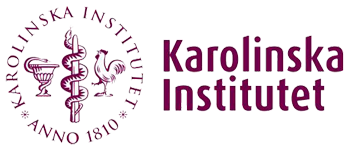
PRESENTING AUTHOR: Prof Roland Grafström
AUTHORS: Roland Grafström1, Pekka Kohonen1, Penny Nymark1, Vesa Hongisto2, Ola Spjuth3 and Barry Hardy4
| 1Institute of Environmental Medicine, Karolinska Institutet, Stockholm, Sweden 2Toxicology Department, Misvik Biology Corporation, Turku, Finland 3Department of Pharmaceutical Biosciences and Science for Life Laboratory, Uppsala University, Uppsala, Sweden 4Douglas Connect, Switzerland |
ABSTRACT
Knowledge integration of data from in vitro and in silico methods are increasingly being used in safety testing relative to traditional costly animal testing, including for evaluation of chemicals, nanomaterials and diverse consumer products.
Stimulating this development, the European Chemicals Agency now advocates for a flexible and extensible ”conceptual framework for evaluating chemicals safety”, built on combining results generated from new predictive tools with existing data.
The Grafström laboratory has for many years analyzed numerous formaldehyde effects in vitro as a case study for adverse outcome pathways, involving a set of complex interactions that associate with toxicity, DNA damage, mutagenicity, cell transformation and carcinogenicity.
We demonstrate under the theme of “knowledge integration supporting decision making” that:
1) toxicogenomics results serve excellently to explore modes of action and adverse outcome pathways,
2) bioinformatics-driven analysis versus large data repositories is key to generating the mechanism-based predictions, and that
3) omics-driven toxicity modeling is a complementary and useful exercise relative other methods.
We conclude on this basis that the omics-driven bioinformatics and modeling approaches overall is able to address toxicity pathways, threshold of toxicological concern ranking, coupling of in vivo pathology to in vitro data, dose response estimation of NOEL/LOEL results, as well as the grouping and read across between different agents.
Consistent and systematic warehousing of the toxicity data types and analysis now presented promises to handle future ab initio “in vitro-based only” toxicity predictions.
To this end, we foresee the application of possibly different variants of the “adverse outcome pathways framework”.
SPEAKER'S BIOGRAPHY
Prof Roland Grafström
 Winner of over 80 international competitive research grants, including from US and European sources. Current grants from the Scientific Research Council, the Cancer and Allergy Fund and the Fund for Research without Animal Experiments in Sweden. Partner/team member 2011-2018 in EU projects: FP7-HEALTH-2010-Alternative-Testing, through “SEURAT/ToxBank” - Integrated data analysis and servicing”, NMP-2012- “NANoREG” “Regulatory testing of nanomaterials”, NMP-2012-NANOSOLUTIONS “Systematic investigations of the mechanisms and effects of engineered nanomaterial interactions with living systems and/or the environment”, NMP-2013-eNanoMapper “A Database and ontology framework for nanomaterials design and safety assessment”, and NMP-2014-“NANOREG2” “Development and implementation of Grouping and Safe-by-Design approaches within regulatory frameworks”.
Winner of over 80 international competitive research grants, including from US and European sources. Current grants from the Scientific Research Council, the Cancer and Allergy Fund and the Fund for Research without Animal Experiments in Sweden. Partner/team member 2011-2018 in EU projects: FP7-HEALTH-2010-Alternative-Testing, through “SEURAT/ToxBank” - Integrated data analysis and servicing”, NMP-2012- “NANoREG” “Regulatory testing of nanomaterials”, NMP-2012-NANOSOLUTIONS “Systematic investigations of the mechanisms and effects of engineered nanomaterial interactions with living systems and/or the environment”, NMP-2013-eNanoMapper “A Database and ontology framework for nanomaterials design and safety assessment”, and NMP-2014-“NANOREG2” “Development and implementation of Grouping and Safe-by-Design approaches within regulatory frameworks”.
Of special relevance to this lecture is the cancer biology and Tox21 Century Toxicology-inspired studies within the SEURAT-1/ToxBank project ("Safety Evaluation Ultimately Replacing Animal Testing”) aiming to replace repeated dose toxicity testing with data-rich analyses of sophisticated cell culture models. The role of the Kohonen/Grafström team has been to guide the application, analysis, interpretation and storage of so called “omics” technology-derived data. Results to be presented demonstrate principles and concepts for modern knowledge management of toxicological data, including the translation of basic discovery results and chemicals testing data to information relevant to human health and safety.
CURRENT EMPLOYMENT: Professor in Biochemical Toxicology, Institute of Environmental Medicine, Karolinska Institutet (KI), Stockholm, Sweden.
